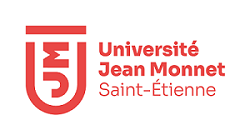Controlling laser-induced refractive index changes in optical glasses
Résumé
Ultrafast lasers emerged as promising tools to process embedded refractive index changes in bandgap materials. Photonic functions were demonstrated in various glasses of optical relevance. However, the irradiation outcome depends on the material relaxation paths as well as on the spatio-temporal characteristics of the writing beam. It can result in both positive and negative index variations, the latter being detrimental for waveguiding applications. These facts impose specific limitations to the photoinscription process. Recently, new beam manipulation concepts were developed which allow a modulation of the energy feedthrough according to the material transient reactions, enabling thus a synergetic interaction between light and matter and, therefore, optimal results. We consequently discuss the possibility of controlling laser-induced physical phenomena employing automated temporal pulse shaping. Examples of adaptive design of refractive index changes in “thermal” glasses will be shown as well as insights into 3D parallel writing techniques for complex structures using wavefront engineering.

